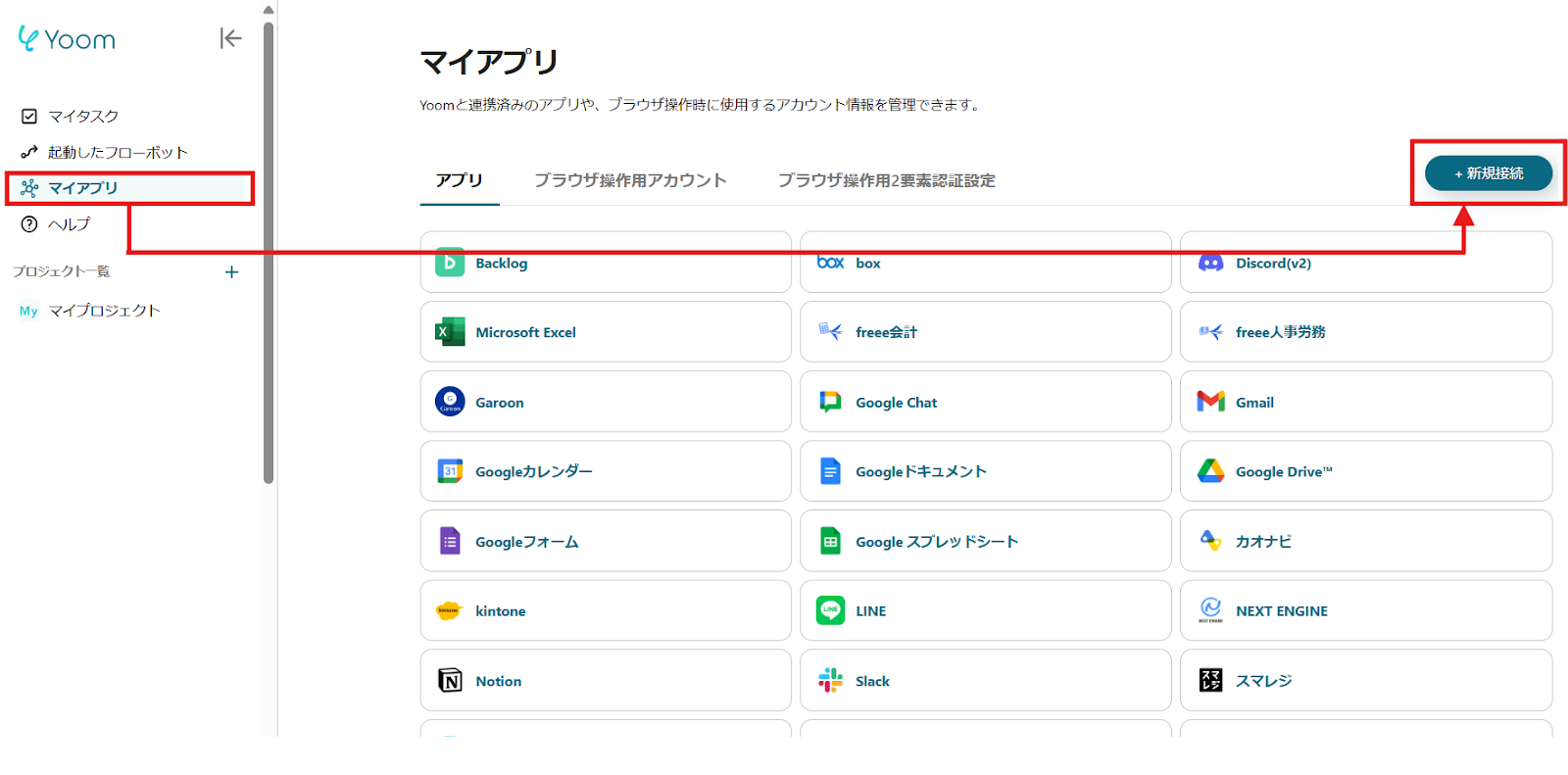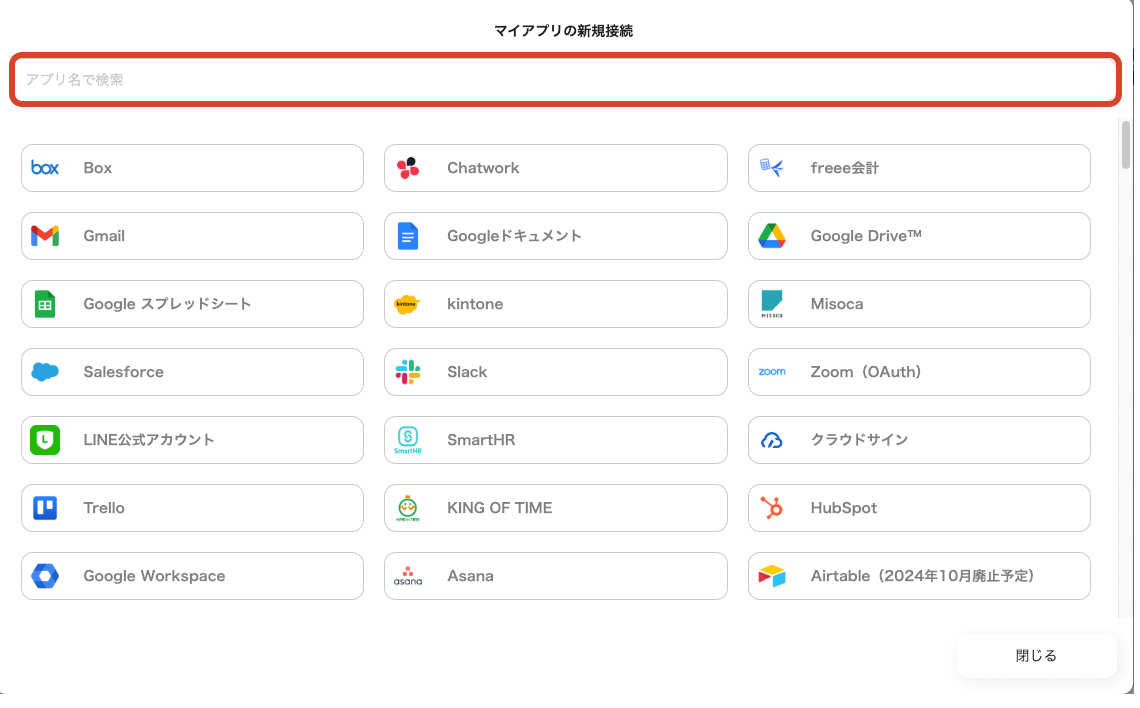Similarly, in other applications, by using the HRMOS API and the external application's API, it is possible to automatically register information in HRMOS.
.avif)
・

By using the HRMOS API in conjunction with external application APIs, you can integrate recruitment candidate information with external application recruitment management systems or internal tools, allowing for centralized information management. For example, in the recruitment department, whenever a new applicant is registered, the information is automatically reflected in the internal database, enabling the person in charge to always view the latest applicant information, thereby improving the efficiency of management tasks.
Additionally, by using the HRMOS API, you can integrate interview schedules of candidates registered in HRMOS with external application APIs, allowing for automatic calendar synchronization and sending notifications to candidates and interviewers. This enables the HR department to automatically add candidates' interview schedules to the calendar and send notifications, reducing the effort required for schedule adjustments.
Furthermore, it is possible to set up workflows that automatically register data in the HR database or payroll system when a candidate accepts a job offer. The information of candidates who have accepted job offers is automatically registered in the internal HR database and reflected in the payroll system and attendance management, simplifying administrative processes.
Moreover, by combining the HRMOS API with external application APIs, you can regularly update the data of new hires or new employees and automatically reflect it in the internal payroll system or attendance management system. For example, HR personnel can expect improved efficiency in initial payroll and attendance settings as new employee information is automatically updated and reflected throughout the internal system.
By leveraging these features, the HRMOS API contributes to the efficiency of recruitment and HR operations, improves data accuracy, and reduces manual tasks. Additionally, by utilizing the API, you can seamlessly integrate with other cloud tools or existing systems and build customized workflows.
This time, we will use a service called Yoom to utilize HRMOS without coding.
[What is Yoom]
First, please access the official Yoom website and create an account. If you have already registered an account, please log in. Yoom Account Issuance Page
0) Preparation
To register a My App in HRMOS, you need to obtain an access token. Please log in to HRMOS in advance and obtain it. For more details, please refer to this. How to Register My App in HRMOS | Yoom Help Center
1) After logging into your Yoom account, register the app you will use. Click "My Apps" and select "New Connection."

2) A list of apps that can be connected with Yoom will be displayed. Search for "HRMOS," which will be used this time, from the search window at the top.

Once you have selected HRMOS, enter the account name and the access token obtained during preparation, and click "Add."

3) Once registration is complete, an icon will be displayed in My Apps. Please check if the icon of the registered app is displayed.
Now you can use the HRMOS API from Yoom!
Yoom offers a variety of flowbot templates, allowing you to easily use various flowbots with just a click.
Details about flowbots are introduced in the following video.
From here, we will introduce the templates that are actually prepared for each recommended job type and actual usage scene.
Yoom allows integration with various services, and templates corresponding to each service are also available. Let's automate HRMOS by utilizing templates that can be linked with the services you usually use!
By using the HRMOS API and external application APIs, when information is registered in an external application, it is possible to automatically register information in HRMOS. Registration is possible based on HRMOS information, so it is expected to improve the accuracy of information, reduce work time, and improve operational efficiency. For example, in the general affairs department, information of new employees registered in Notion can be automatically registered in HRMOS's HR system. This eliminates the need for manual input and allows for quick and accurate reflection of employee data. Additionally, smooth coordination with each department necessary for onboarding can be expected, ensuring efficiency in onboarding and consistency of data.
Similarly, in other applications, by using the HRMOS API and the external application's API, it is possible to automatically register information in HRMOS.
By using the HRMOS API, when information is updated in an external application, you can update HRMOS information via the external application's API.
This reduces the effort of regularly checking external applications and allows you to register information based on the external application's data, which can improve the accuracy of the information.
For example, in the HR department, when employee information is updated on Google Sheets, the HR system can automatically update to the latest information.
This allows for quick and accurate reflection of changes such as department transfers or contact information updates in attendance management and evaluation systems, reducing the effort of manual input and improving data consistency and accuracy, which can enhance operational efficiency.
By utilizing the HRMOS API and the messaging app API, it is possible to search for employees in HRMOS and notify them when a message is posted in the messaging tool.
By sending the registered email address to the messaging app, you can search and retrieve the registration details, which helps prevent manual input errors and saves time.
Furthermore, since detailed information can be obtained just by sending a message, it is expected to reduce working time and improve operational efficiency.
For example, in the sales department, when a message is posted on Chatwork, the HR system can automatically search for the relevant employee's information and notify the person in charge.
This allows for quick access to employee information when inquiries or confirmations are needed within the team, thereby improving work speed.
Similarly, it is possible to receive messages via email, search, and complete employee registration.
More tasks can be automated, leading to significant overall operational efficiency improvements.
・Those managing recruitment and HR tasks with HRMOS
・Those who want to maintain data consistency while managing centrally
・Those who want to quickly update and share information
・Those who want to reduce manual tasks and improve operational efficiency
We introduced how to integrate HRMOS API with applications and provided actual use cases. By utilizing the HRMOS API, it is expected that the efficiency of recruitment and HR tasks will be significantly improved.
External applications can be integrated with the API to automatically register and update employee information, reducing manual tasks and ensuring data consistency and accuracy.
For example, when new employee information is registered in Notion, it is automatically reflected in HRMOS, improving work speed and streamlining onboarding.
Centralized data management and automation enable rapid and accurate information sharing.
We encourage you to use the HRMOS API to enhance the efficiency of your daily operations!
Furthermore, by using Yoom, you can easily implement the HRMOS API without programming knowledge.
Leverage Yoom's extensive templates to achieve efficient business improvements!

.avif)



